Before purchasing anything, it’s important to know the basic information, what to expect, how to identify, price, etc. Checking out these things will help you make a smart purchase that will benefit you in the long run. Figuring out Wapak cast iron and its history, value, and identification guide will help you make a smart decision.
The History of Wapak Cast Iron
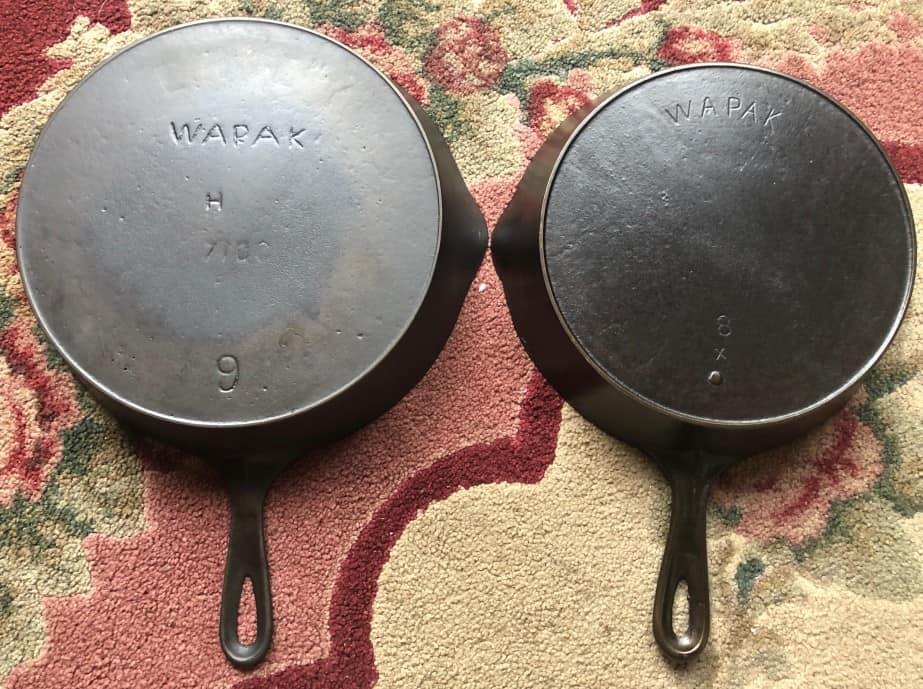
Cast iron has been esteemed as the best skillet used for cooking. Out of all the other metals, cast iron holds up heat uniformly and is able to hold it for longer periods of time. However, this cookware should be made of pure cast iron and not be mixed or coated with enamel, porcelain, or other elements that can be mixed.
It has been popular with people who like to cook and, of course, with cast iron collectors. Wapak Hollow Ware Co. may not be that popular compared to the big guys like Wagners or the Griswold brands, but their cookware is just as usable and collectable. So, what started Wapak?
In any endeavor or achievement, there is always a starting point. And for Wapak, it is a group of entrepreneurs who decided to work together and actively worked for the company.
- Milton Bennett (President)
- Marion Stephenson (Secretary)
- Harry Bennett (Treasurer)
- Charles Stephenson
- S.P. Hick.
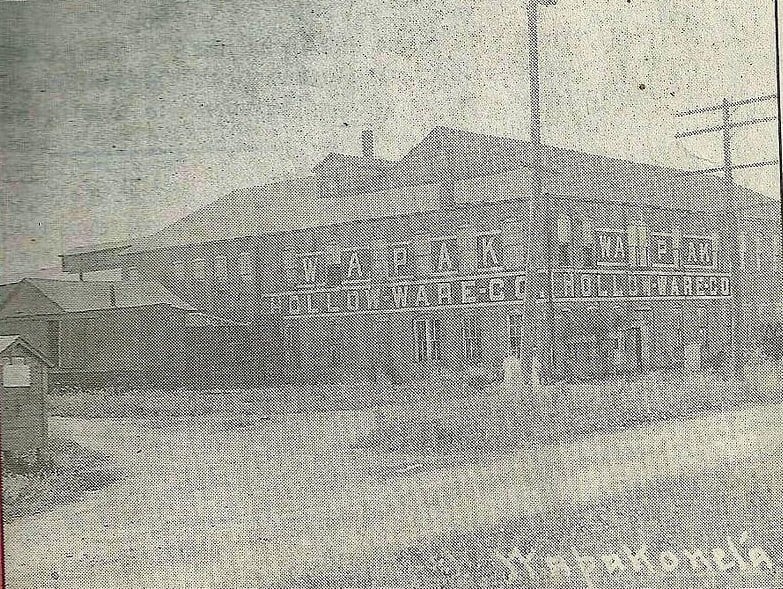
The company started manufacturing cast iron from 1903 to 1926 in Wapakoneta, Ohio, with starting assets approximating $20,000. More than half of these initial expenditures were allocated for machinery and fixtures. From then on, Wapak started manufacturing cast iron cookware like the following.
- Dutch ovens
- Skillets
- Bean pots
- Kettles
- Waffle irons
- Griddles
- Sad irons
The company was best known for its signature logo of an Indian head on its products. Wapak continued manufacturing cast iron cookware until they filed for bankruptcy in 1926. Unfortunately, Wapak did not restructure after the bankruptcy.
Wapak Cast Iron Characteristics: What Makes Them Different?
Wapak cast iron cookware was the pride of the company. The Indian head logo is one of their trademarks, and if you see one on your kitchenware, you will notice how smooth and light the material is.
On the other hand, if you are planning to start collecting vintage cast iron, you might want to check out Wapak ironware. During the company’s operating years, Wapak manufactured a wide range of cookware.
The foundry workers took pride in their manufacturing of these cookware pieces. TThus, Wapak has a certain character and personality embedded in their kitchenware and offers more competitive pricing than other manufacturing companies.
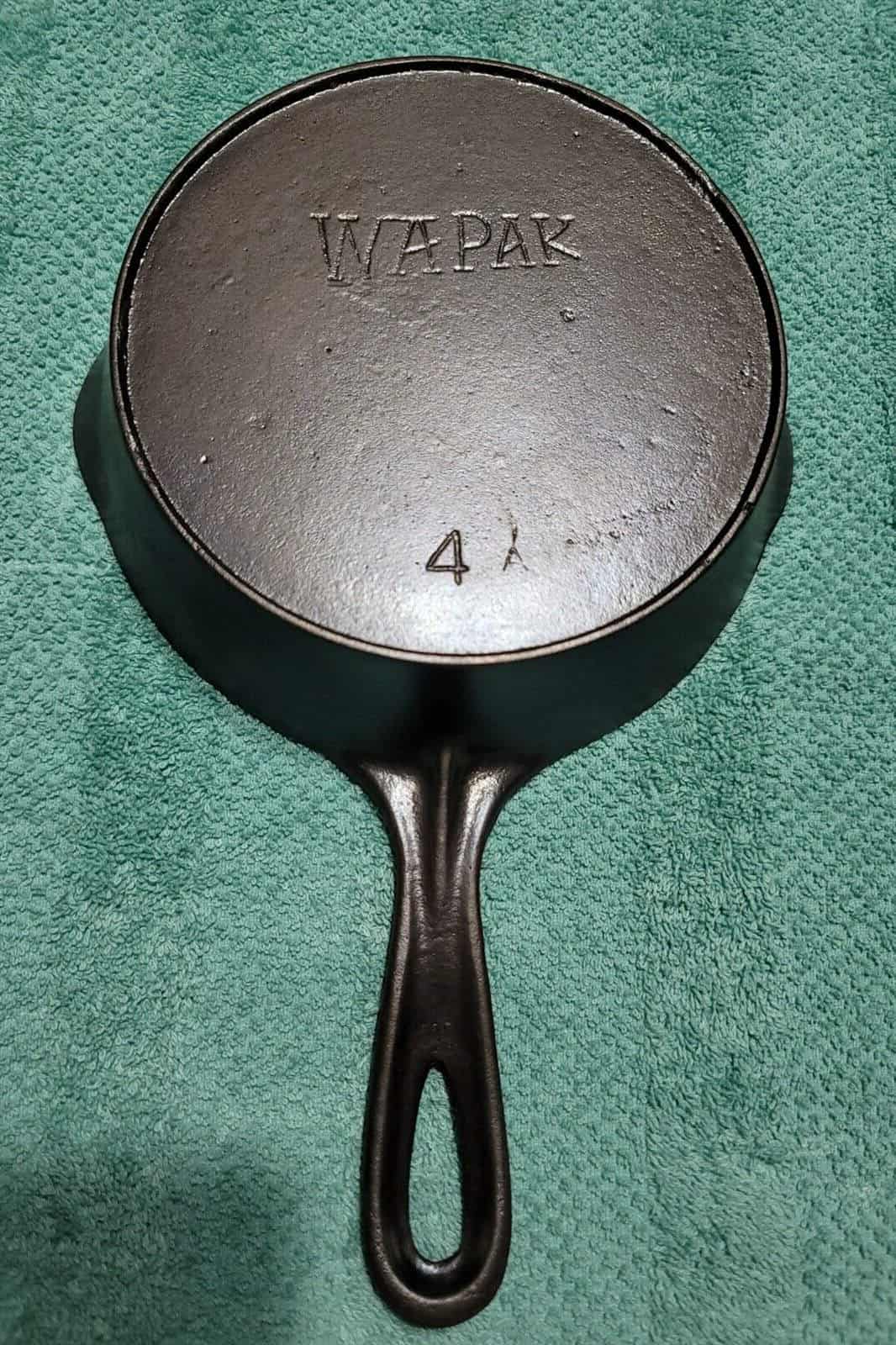
Ghost marks
Some Wapak cast iron wares might have a ghost mark visible on the surface of the product.
There are fewer casting flows
Wapak ironware usually has casting flaws that are visible as you can scan your ironware and find some dents, slight ripples, and mild flaws on the product. Casting flaws are not unusual at all, as they normally happen because of sand shifts during casting.
Despite their commonness, Wapak cast iron skillets with the Indian head logo have fewer flaws than the usual ones. It can be suspected that perhaps they took extra care of the kitchen wares with the logo. These flaws are usually found on the base and sides of the cookware, so if you spot some dents in these places, you have a totally normal piece of Wapak cookware.
High Quality
Wapak cast iron equipment is of good quality. The company could possibly sell its ironware with the Indian head logo at a premium price compared to their other cookware bearing a different logo.
Today, cookware with the Indian head logo and other vintage products are still sold at a premium price. Ironware branded with the Indian head logo is very popular with collectors and can be pricey. This ironware is tagged “high grade” for a reason. The quality will be superb, and you can expect a lightweight pan with a very smooth cooking surface.
Things to Look for When Buying Wapak Cast Iron Skillets
If you opt to purchase and collect Wapak cast iron products with the Indian head logo, you will need to look out for a number of things to ensure that you are buying the right thing. In the collectors’ world, there are also scammers trying to make money by selling fake and low-tier products. If you find a cast iron skillet, you might want to assess three important features as follows:
Logo
The logo has been the trademark and the appeal of Wapak cast iron skillets. Some collectors collect this specific kitchenware by their logos. This means the crispness, depth, and overall quality of the logo will affect the pricing range.
Collectors have set emphasis on the logo’s face and headdress as these details are the logo’s “popping features.” The next thing to look out for are the markings ‘High Grade.” You need to assess whether the individual letters are visible and distinguishable.
However, these logos are not perfect, and it is very rare to find one. Most logos existing today are not in perfect condition, and the markings can be unreadable. Despite this, it’s a shame to pass up on these collectibles just because of an imperfect logo.
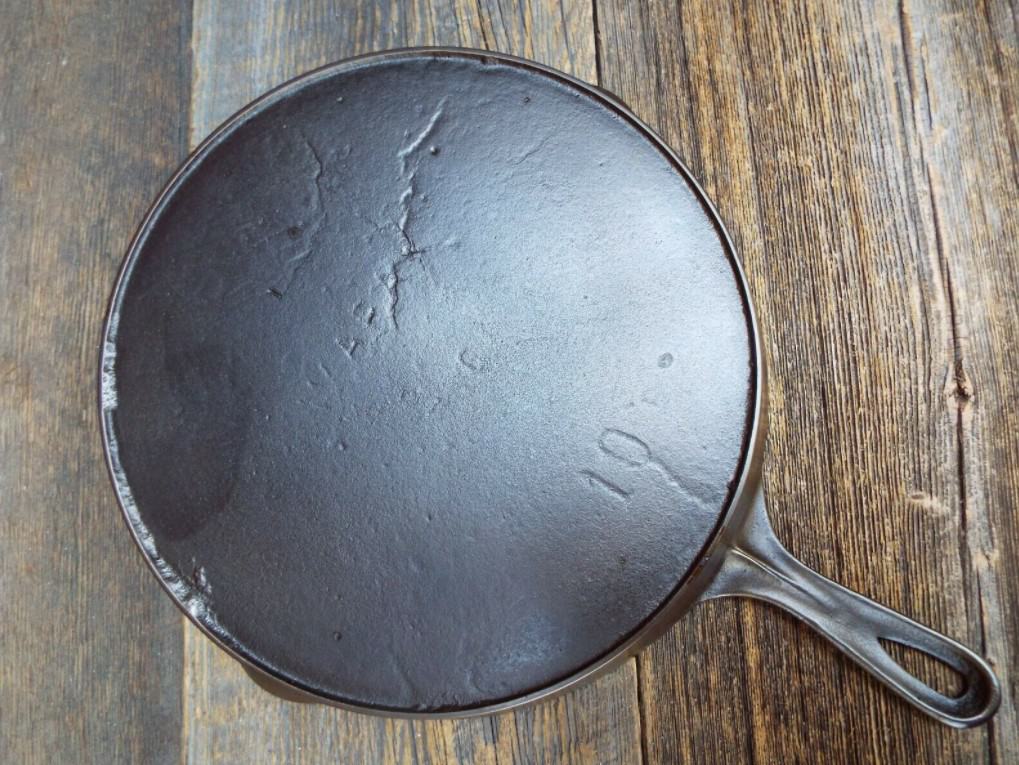
Size
The size range of kitchenware manufactured by Wapak typically includes vintage sizes such as 2, 3, 4, 8, and 9. The rare sizes would be 2 and 4. Larger sizes are usually more expensive and are more sought after by collectors and people who would like to try cooking with them.
Wobble
When purchasing an Indian skillet, you would need to check the wobble, or the movement of the skillet when placed on a flat surface. Unlike other markings placed on vintage cast iron products, the Indian logo is raised rather than pressed. Therefore, the logo will make the kitchenware wobble or sit unevenly when placed on a flat surface.
Spotting Fake Wapak Cast Iron Products
There are times when you may overthink things and suspect that your Wapak skillet is fake. To put you at ease, your Wapak is probably not a fake as antique copies are considered more rare than genuine ones.
However, although it is “scarce”, it does not mean that it’s impossible to get a fake Wapak. When spotting a fake one, there are things to look out for. A collector usually looks at the following things to spot a fake Wapak.
Patchy and uneven casting
As mentioned earlier, cast iron products can have a number of flaws due to casting. However, cookware with Indian logos tends to have fewer dents and flaws in comparison to other ironware available. A genuine Wapak piece of ironware with the Indian logo will be smooth and light. On the other hand, copycats or fakes are usually thicker and their surfaces are rougher.
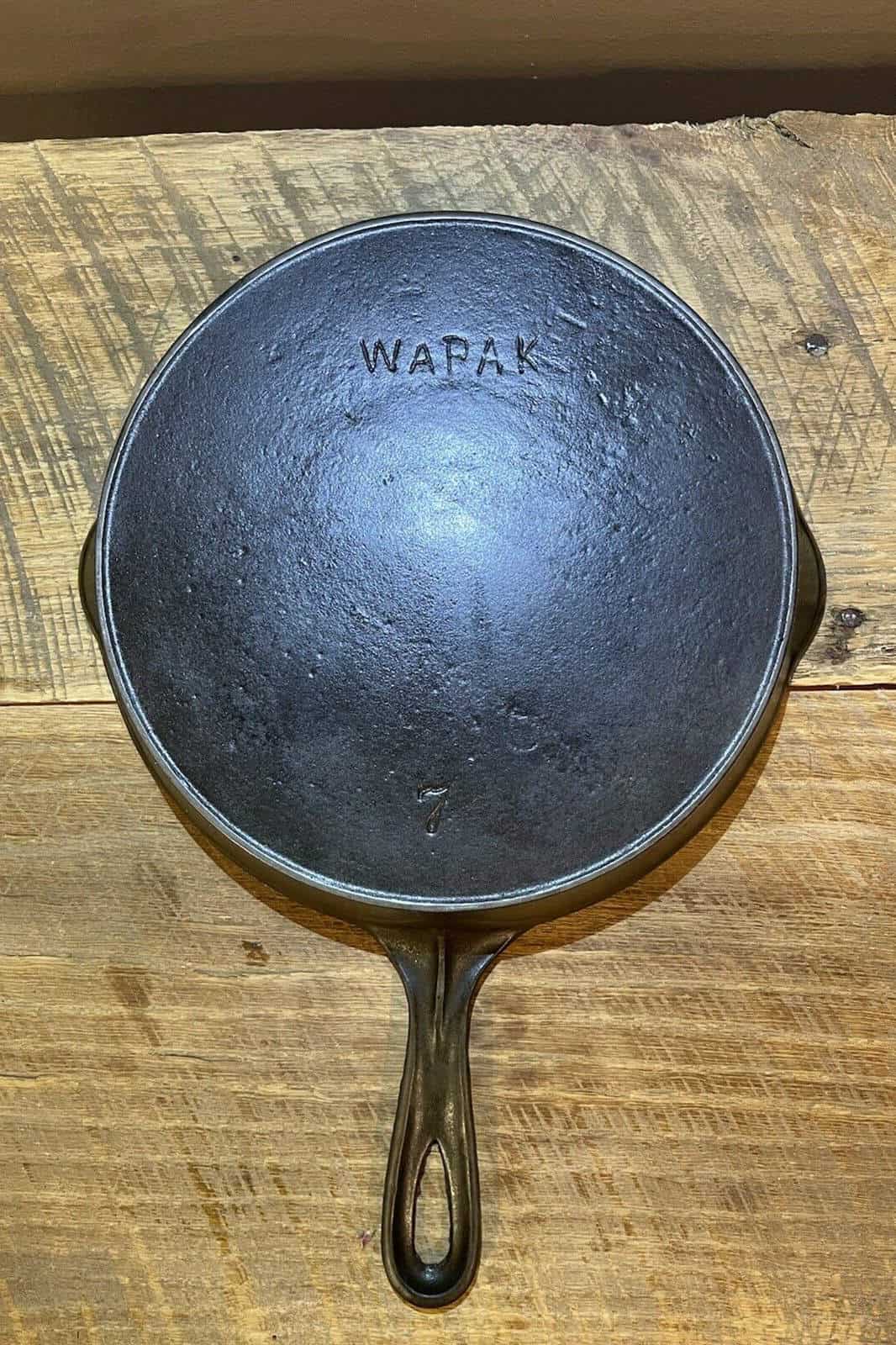
Logo that is thinly embossed and/or poorly designed
As mentioned in the former topics, the Indian logo can be worn out over time, and so having these changes in the logo does not automatically mean it’s fake. However, there are differences that are very noticeable.
If you spot a logo that is very much different from the usual genuine logo (even when worn out), it could be a fake. Worry not, as there are indicators of whether the logo is reproduced.
- The “High-grade” marking is legible but may appear distorted due to poor casting.
- The facial expression is lacking and might have an elongated nose.
- The headdress in the logo lacks details.
If you compared a genuine Wapak Indian logo to a fake, you would most probably spot the fake immediately.
An unusual handle sign
Another feature to look out for in spotting a fake Wapak ironware is the product’s handle design. A genuine skillet’s handle would have a rectangular shaped handle instead of a rounded one, as typically found in regular skillets. You can lookout for the following handle designs.
- A common handle design, such as a rounded handle.
- Extremely short handles for waffle irons.
Wapak Logos Through The Times
Wapak cast iron has incorporated and released several logos and markings, which usually indicate both the age of the kitchenware and its rarity. There are seven variations of the logo.
Out of the seven variations, only one does not use the Wapak logo. The seventh logo is the “Oneta”.During that time, cookware bearing this logo was considered lower-grade and was among the budget-friendly tier. Here are the seven variations of the Wapak logo.
1. Wapak Indian Head Logo, Circa 1903–1926
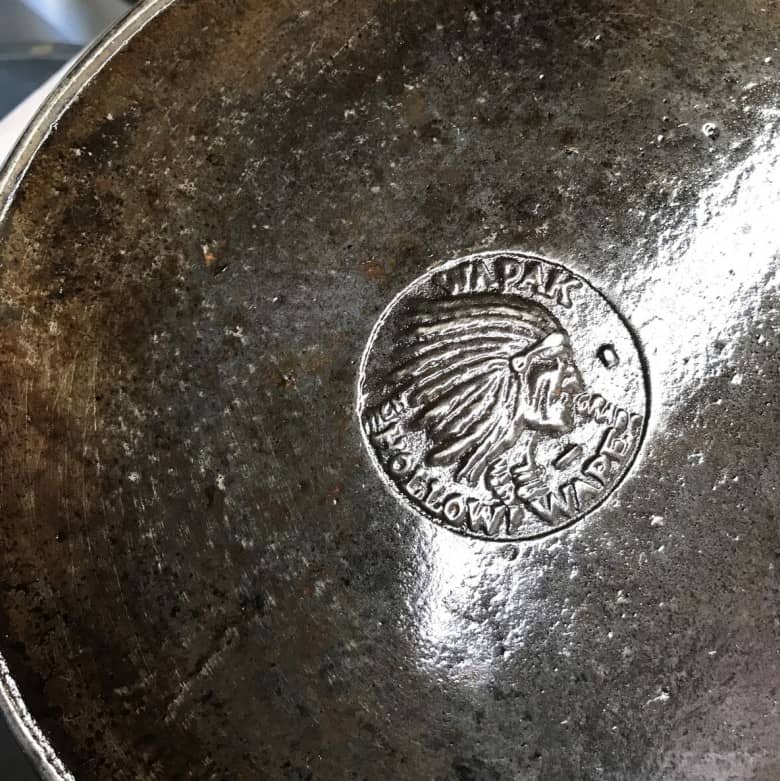
2. Wapak Chickenfoot Logo, Circa 1903 to 1910
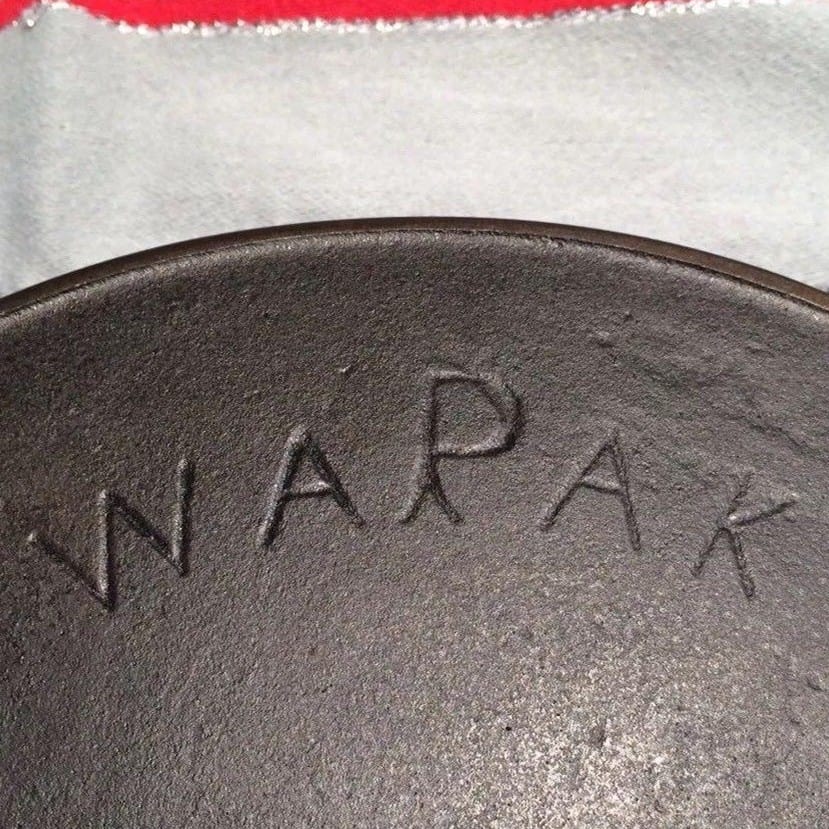
3. Wapak Arc Logo, Circa 1903 to 1910
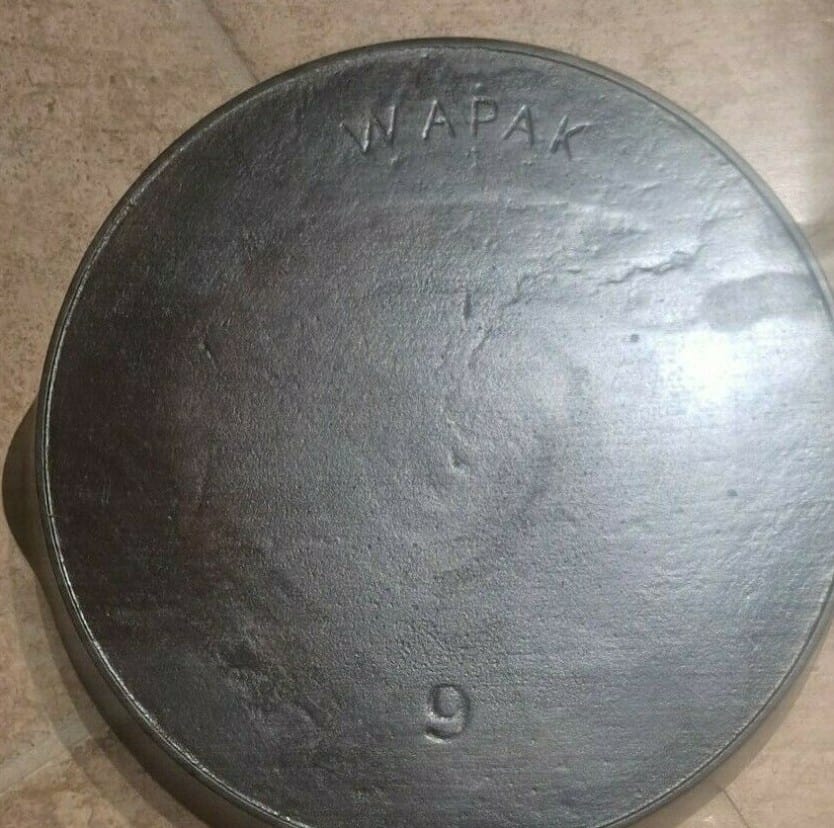
4. Wapak Straight Block Logo, Circa 1903 to 1910
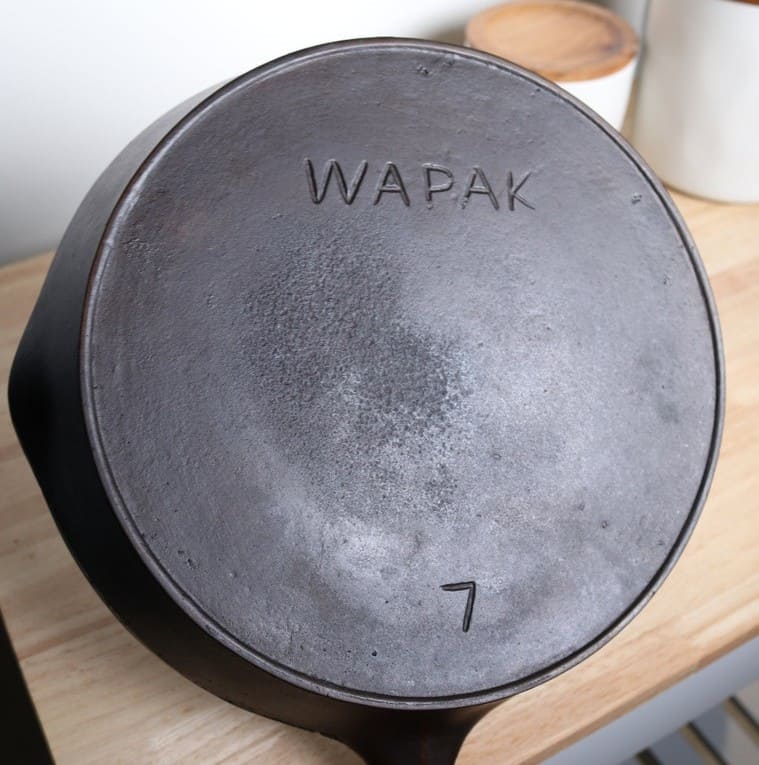
5. Wapak Z Logo, Circa 1903 to 1926
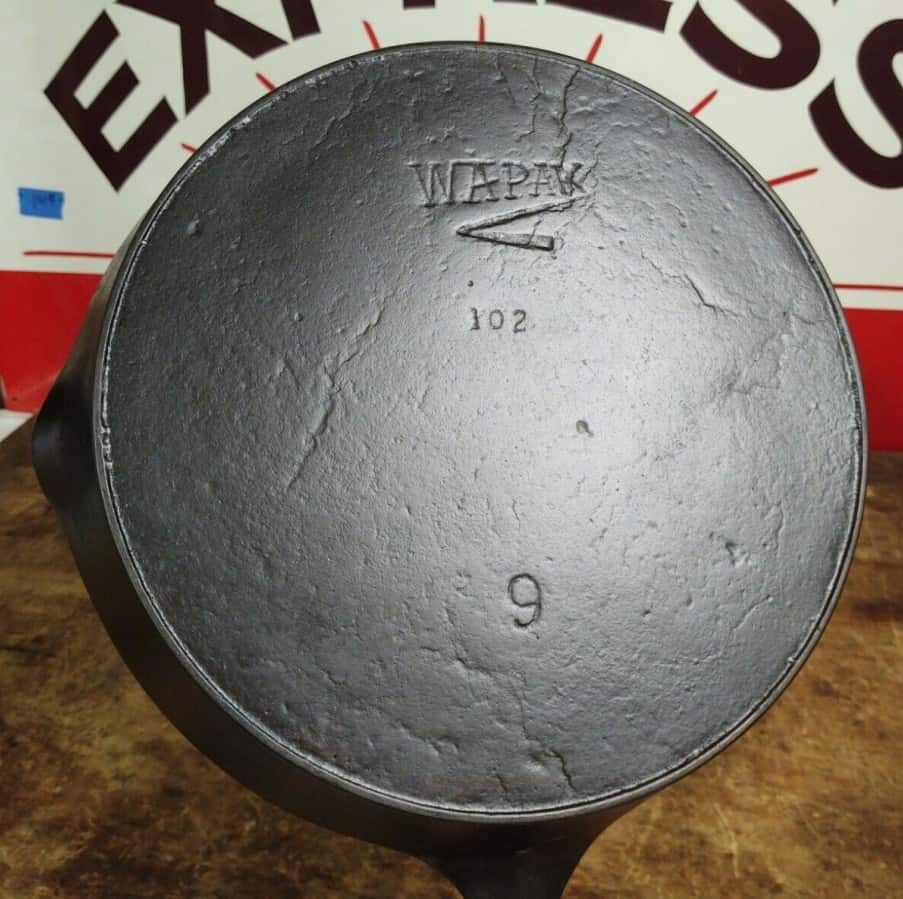
6. Wapak Tapered Logo, Circa 1912 to 1926
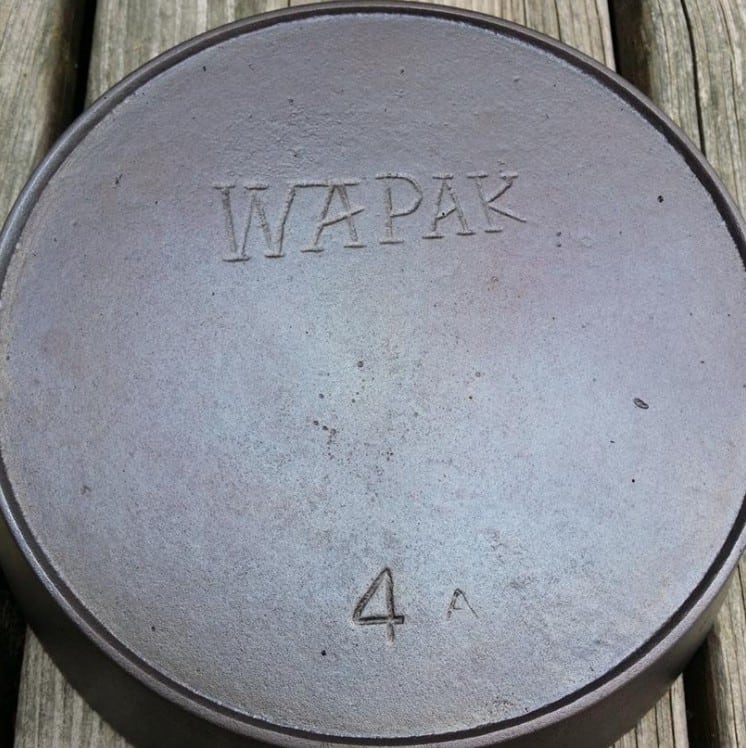
7. Oneta Marking, Circa 1912 to 1926
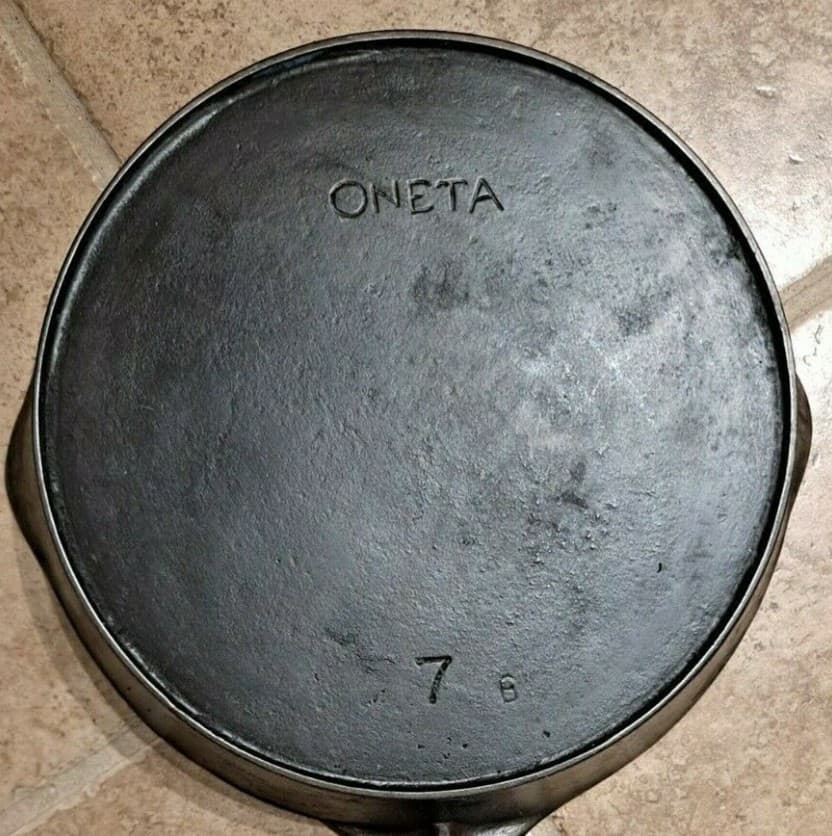
Summary
In a collector’s journey, knowing about your product and your target purchase is very important. This is especially true when collecting antique things like cast iron kitchenware. The knowledge of Wapak cast iron, with its history, value, and identifying guide, is essential. This can help make sure you buy the genuine product rather than a fake.
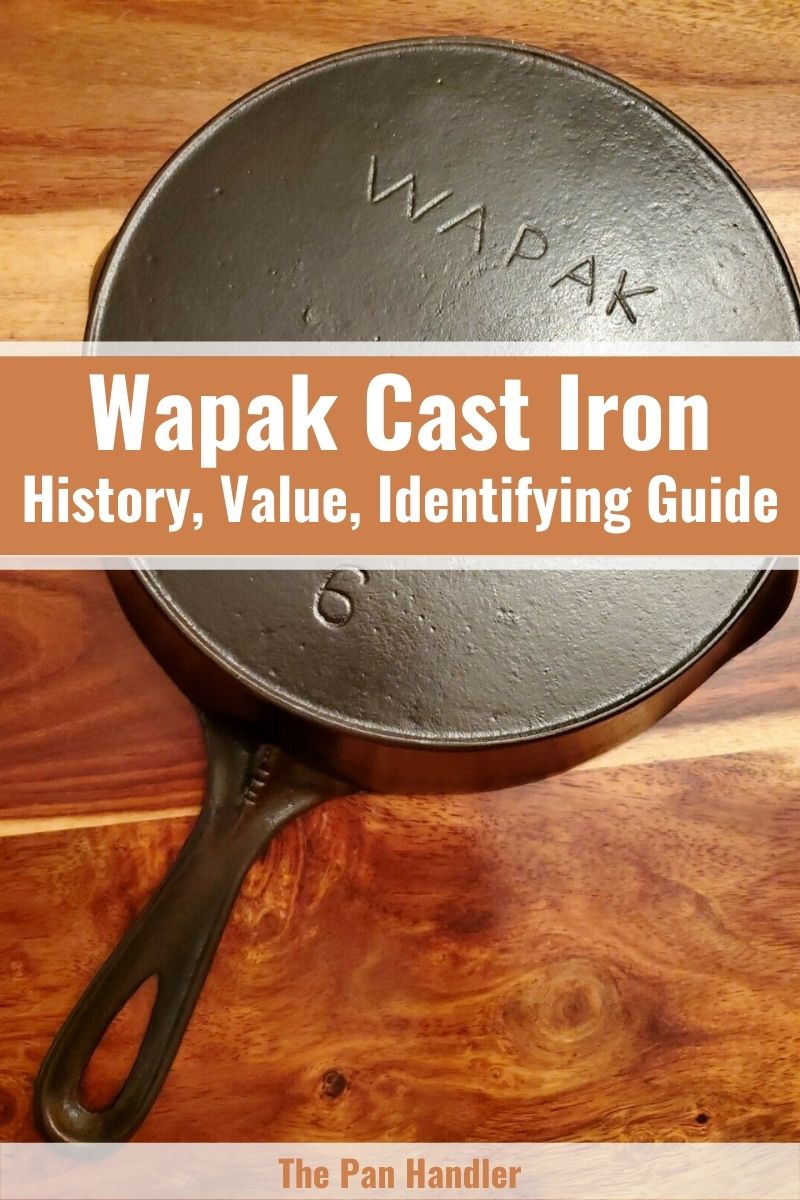

Michael Johnson is the founder of The Pan Handler, Inspired by his blacksmith grandfather’s legacy has a deep appreciation for hand-crafted pots and pans, he provides invaluable guides, reviews, and recipes to enhance your culinary journey.

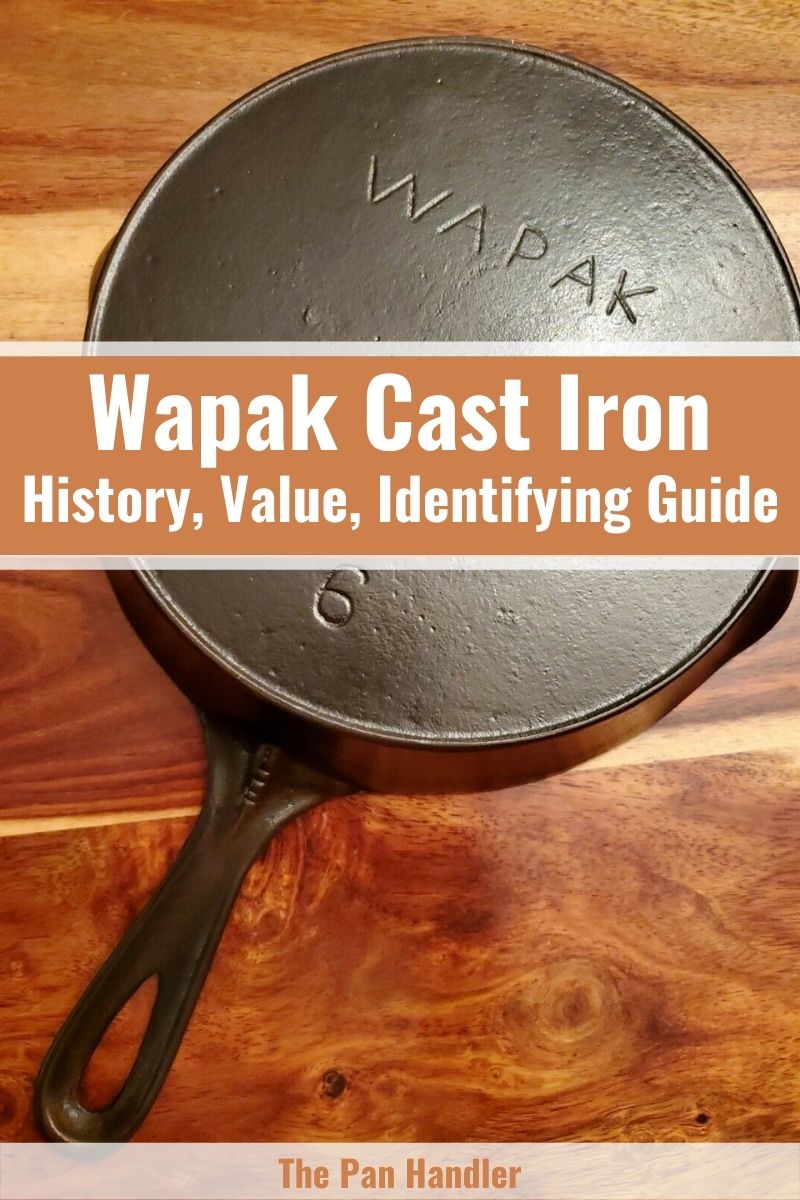
I have a #7 Indian head logo in excellent shape. I am trying to find out its value.
It all depends on the condition of the Indian head logo.
The more WARE on the headband ect. The less value.
#7 skillet ‐90% 250.00to 300.00
-80% 200.00 to150.00
-70% 150.00 to 200.00
This is one person’s opinion.
I own two wapak Indians a # 3 a d a # 9 .the #9 I found in the wild last year 4/21.
It was fantastic.
Thomas
I just got these from my mama. What kinda value do they have.https://quickshare.samsungcloud.com/r7HOQ2yAjJ1y
Personally speaking, I’d pay $200.
I have one with the chicken foot logo. Curious what it’s worth. Also have a Griswold 9
Just curious, I have a Dutch oven pot with WAPAK 8 on the bottom with a lid that has. WAPAK HOLLOW WARE CO, CAST IRON COOKING UTENSILS. WAPAKONETA OHIO No 8. The pot has a rounded like heavy wire handle attached on sides.
I have a. #5 iron and #7 can you tell me about them ? And worth??
I have a WAPAK 10 skillet. The logo is arced (1903-1910?). I can’t seem to find any information on one of the markings. Can you tell me what a “B” on the underside of the handle indicates?
Hello and good day,
I have a tapered logo Wapak forgery that, according to the read, might have some buyer interest. Have you got any advice about where to find those folks.
Thank you,
Mike Robinson
Hello, I have a pan with the what appears to be the straight block lettering, but it’s centered on the skillet, rather than at the top. Does this indicate that it’s not genuine?
Thanks!
Hi Kari, Some years had special or misprinted versions due to manufacturing processes. To truly determine authenticity, consider factors like weight, texture, and other markings
Thanks!🙏🏼